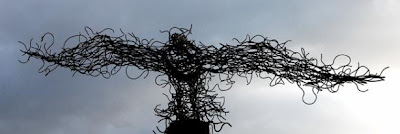Throughout the end of May, Artery Gallery on South Street are celebrating what has been an exciting and enjoyable second year in the town.
The many locals and overseas visitors to have visited the gallery have showed great excitement and support since the opening in the town in May 2006. The continued growth and variety of local, national and international artists has been the major factor in Artery Gallery’s development from the early beginnings of the Crieff gallery to the expansion of the St Andrews branch.
Together with the addition of popular Scottish landscape painters Martin Devine, Jane Duckfield and John Wetten-Brown, Artery Gallery has also introduced two renowned International artists. Italian painter and cloud appreciation society member Alberto Bertoldi was introduced to exhibiting in Scotland last year with great anticipation. His photo-realistic oil paintings of storm building and sunburst clouds transfix the viewer with their immense beauty. Alberto has arranged over 30 exhibitions of his work across Italy and has also had books published based solely on his cloud paintings.
Following on from Alberto Bertoldi, was the arrival of Alexandros Arabatzoglou, a truly renowned sculptor from Crete and heralded by many in the art world as the Cretian Henry Moore. Alexandros’ sculptures have been sold to private collectors all over the world, and demand for his work has been such that he has not exhibited in a gallery for nearly nine years, despite offers from some of the worlds most prestigious galleries. However, after striking up a relationship with Artery Gallery, Alexandros decided to end his gallery exile by exhibiting one of his hand carved sculptures in their St Andrews branch.
The Director of Artery Gallery explains “After meeting with Alexandros in Crete last year, I was amazed at his drive, passion and enthusiasm for his work and his art. For him, creating his sculpture is like breaking down to the bare bones of his inner soul, using his hands to carve into the stone and creating an extension of himself within each individual sculpture”. He adds “Here at Artery Gallery, we are always looking to expand on the superb catalogue of talent we exhibit, and inviting Alexandros to join us, knowing of the interest he has gained, is exciting for the gallery, for St Andrews, and for world art exhibited in Scotland”.
The collection of seascape paintings by Colin Carruthers have gained popularity with every one of his exhibitions, and during the last year this has seen Colin grant Artery Gallery with exclusive exhibiting rights for Scotland.
Handmade Jewellery has continued to show great popularity in the St Andrews Gallery with Artery exhibiting works from over 10 different jewellers, stretching from Brazil to Israel, as well as those from a little closer to home such as Dunfermline, Crieff, Oban and Stirling! All very different and unique in techniques, materials and style.
Artery Gallery has been a major supporter of contemporary Scottish artists over the past few years from the gallery in King Street, Crieff and their award winning website, and continues to boost artist profiles by introducing them to the busy Scottish town of St Andrews where it’s UK and overseas visitors can see some of the best contemporary artwork first hand.
Artery Gallery at 43 South Street, St Andrews (01334 478221) and 22 King Street, Crieff (01764 655722).
www.arteryuk.com



